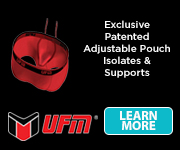How To Choose The Right Sleeping Bag For Camping
Choosing the right Sleeping Bag is crucial for a successful camping trip. A good sleeping bag ensures you stay warm, comfortable, and well-rested, which is vital for enjoying outdoor activities. With numerous options available, selecting the perfect Sleeping Bag can be daunting. This guide will help you understand the various types of sleeping bags, the key factors to consider, and how to find the one that best suits your camping needs.
1. Types of Sleeping Bags
Rectangular Sleeping Bags
Advantages:
Space and Comfort: Rectangular sleeping bags offer ample space for movement, making them ideal for those who prefer a roomy sleeping environment.
Versatility: They can often be unzipped completely to serve as a blanket, providing flexibility in various conditions.
Disadvantages:
Weight and Bulk: They tend to be heavier and bulkier, which can be a drawback for backpackers.
Less Warmth: The loose fit can result in heat loss, making them less suitable for cold weather.
Mummy Sleeping Bag
Advantages:
Warmth: Mummy bags are designed to minimize heat loss, with a snug fit that helps retain body heat.
Lightweight and Compact: They are generally lighter and more compact, making them ideal for backpacking.
Disadvantages:
Restricted Movement: The snug fit can be restrictive for those who prefer more space while sleeping.
Less Versatile: They are not as versatile as rectangular bags and cannot be opened fully.
Semi-Rectangular (Barrel) Sleeping Bags
Advantages:
Balance of Comfort and Warmth: Semi-rectangular bags offer a compromise between the warmth of mummy bags and the space of rectangular bags.
Versatility: They provide a good balance of weight, warmth, and comfort.
Disadvantages:
Moderate Weight and Size: They are not as light and compact as mummy bags, but not as bulky as rectangular bags.
Double Sleeping Bags
Advantages:
Space for Two: Designed for couples or those who prefer extra space, double sleeping bags provide room for two people.
Versatility: They can often be separated into two individual bags.
Disadvantages:
Weight and Bulk: They are heavier and bulkier, making them less suitable for solo backpacking trips.
Heat Loss: They may not retain heat as efficiently as single bags.
Quilts
Advantages:
Lightweight and Compact: Quilts are ideal for ultralight backpacking due to their minimal weight and bulk.
Versatility: They can be used in various configurations, depending on the weather and personal preference.
Disadvantages:
Heat Loss: Quilts can result in heat loss if not used correctly, as they lack the full enclosure of sleeping bags.
Less Protection: They offer less protection from drafts and cold air.
2. Temperature Ratings
Understanding Temperature Ratings
Temperature ratings indicate the lowest temperature at which a sleeping bag will keep an average sleeper warm. They are typically divided into three categories:
Comfort: The temperature at which a cold sleeper might feel comfortable.
Limit: The lowest temperature at which a warm sleeper might remain comfortable.
Extreme: The temperature at which a person can survive for six hours without risk of death from hypothermia.
Choosing the Right Temperature Rating
Seasonal Considerations:
Summer: Choose a bag rated for temperatures above 32°F (0°C).
Three-Season: Choose a bag rated for temperatures between 20°F (-7°C) and 32°F (0°C).
Winter: Choose a bag rated for temperatures below 20°F (-7°C).
Personal Considerations:
Cold Sleepers: If you tend to get cold easily, opt for a bag with a lower temperature rating.
Warm Sleepers: If you tend to stay warm, you can choose a bag with a higher temperature rating.
3. Insulation Types
Down Insulation
Advantages:
Warmth-to-Weight Ratio: Down insulation provides excellent warmth for its weight, making it ideal for backpacking.
Compressibility: Down bags compress well, saving space in your pack.
Disadvantages:
Cost: Down Sleeping Bags tend to be more expensive than synthetic options.
Moisture Sensitivity: Down loses its insulating properties when wet, which can be a significant drawback in damp conditions.
Synthetic Insulation
Advantages:
Moisture Resistance: Synthetic insulation retains its warmth even when wet, making it suitable for wet conditions.
Cost: Synthetic sleeping bags are generally more affordable than down bags.
Disadvantages:
Weight and Bulk: Synthetic bags are typically heavier and bulkier than down bags.
Durability: They tend to degrade faster over time compared to down.
4. Shape and Size
Shape
Rectangular: Offers more space but less warmth.
Mummy: Provides maximum warmth but less space.
Semi-Rectangular: Balances warmth and space.
Double: Designed for two people, providing more space but less warmth.
Size
Length: Ensure the bag is long enough for your height. Standard lengths typically fit individuals up to 6 feet tall, while longer bags accommodate taller individuals.
Width: Consider the width if you prefer more room to move around or if you have a larger build.
5. Weight and Packability
Backpacking vs. Car Camping
Backpacking: Weight and packability are critical. Choose lightweight, compressible bags.
Car Camping: Weight and packability are less important. Focus on comfort and warmth.
Compression Sacks
Using a compression sack can help reduce the size of your Sleeping Bag, making it easier to pack. Ensure your bag comes with or is compatible with a compression sack.
6. Features to Consider
Hood
A hood can significantly enhance warmth by trapping heat around your head. Look for a hood with adjustable drawstrings for a snug fit.
Zippers
Two-Way Zippers: Allow for ventilation and easier entry/exit.
Draft Tubes: Insulated tubes along the zipper prevent heat loss.
Anti-Snag Zippers: Prevent the zipper from catching on the fabric.
Pockets
Internal pockets can be useful for storing small items like a flashlight or phone, keeping them within easy reach.
Pad Sleeves
Some sleeping bags come with pad sleeves to keep your sleeping pad in place, preventing it from shifting during the night.
Foot Boxes
A well-designed foot box can provide extra space and insulation for your feet, enhancing overall comfort.
Ventilation
Ventilation options, such as zippered vents, can help regulate temperature and prevent overheating.
7. Brand Recommendations
Top Brands for Sleeping Bags
REI Co-op: Known for their quality and value, offering a range of Sleeping Bags for different needs.
The North Face: Offers high-performance sleeping bags with innovative features.
Mountain Hardwear: Known for their durable and warm sleeping bags, suitable for extreme conditions.
Big Agnes: Specializes in sleeping bags with integrated pad sleeves and spacious designs.
NEMO Equipment: Offers unique designs and high-quality materials, focusing on comfort and performance.
Popular Models
REI Co-op Magma 15: A high-quality down sleeping bag with excellent warmth-to-weight ratio.
The North Face One Bag: A versatile sleeping bag with interchangeable layers for different temperature ranges.
Mountain Hardwear Lamina: A synthetic sleeping bag known for its durability and warmth.
Big Agnes Anvil Horn: A down sleeping bag with an integrated pad sleeve for added comfort.
NEMO Disco: A spoon-shaped sleeping bag offering more space and comfort for side sleepers.
8. Care and Maintenance
Cleaning Your Sleeping Bag
Down Bags: Use a front-loading washing machine with a down-specific detergent. Tumble dry on low heat with tennis balls to restore loft.
Synthetic Bags: Machine wash with a mild detergent. Air dry or tumble dry on low heat.
Storing Your Sleeping Bag
Store your sleeping bag in a large, breathable storage sack or hang it in a cool, dry place. Avoid compressing it for long periods to maintain loft and insulation.
Repairing Your Sleeping Bag
Tears and Holes: Use repair tape or patches to fix small tears and holes.
Zippers: Ensure zippers are free of dirt and debris. Lubricate them occasionally to maintain smooth operation.
9. Additional Tips
Try Before You Buy
If possible, try out different sleeping bags in-store to get a feel for the fit and comfort. Consider borrowing from friends or renting before making a purchase.
Consider Your Sleeping Pad
Your sleeping pad can significantly affect the warmth and comfort of your sleeping bag. Ensure it provides adequate insulation and matches your sleeping bag’s dimensions.
Layering
In colder conditions, consider layering your sleeping bag with a liner or an additional blanket. This can add warmth and help keep your bag clean.
Plan for the Conditions
Consider the weather and terrain of your camping destination. Choose a sleeping bag that matches the expected conditions to ensure you stay comfortable and warm.
Budget Wisely
While it's tempting to save money, investing in a quality Sleeping Bag can make a significant difference in your comfort and overall camping experience. Balance your budget with your needs to find the best option.
Conclusion
Choosing the right sleeping bag involves considering various factors, including the type of Sleeping Bag, temperature ratings, insulation types, shape and size, weight and packability, and additional features. By understanding these elements and prioritizing your specific needs, you can find the perfect sleeping bag for your camping adventures. Whether you're a seasoned backpacker or a casual camper, the right sleeping bag will ensure you stay warm, comfortable, and well-rested, allowing you to fully enjoy the great outdoors.
About the Author: Earnest Sherrill
Earnest Sherrill is a passionate outdoor enthusiast and writer who resides in the warm and breezy state of Texas. With a deep love for nature, Earnest enjoys exploring the great outdoors and sharing his experiences through his writing. He writes about various aspects of outdoor life and the intriguing happenings of everyday experiences. When not writing, Earnest cherishes spending time with his youngest grandchildren, who bring vibrant energy and robust attitudes to his life. Stay connected with Earnest to discover more about the wonders of the outdoors and the joys of life's adventures.
Other Projects
Subscribe
Subscribing will enable you to get regular notifications about new postings...

Refer a friend and earn $10 at Atlanta Cutlery Corp.



